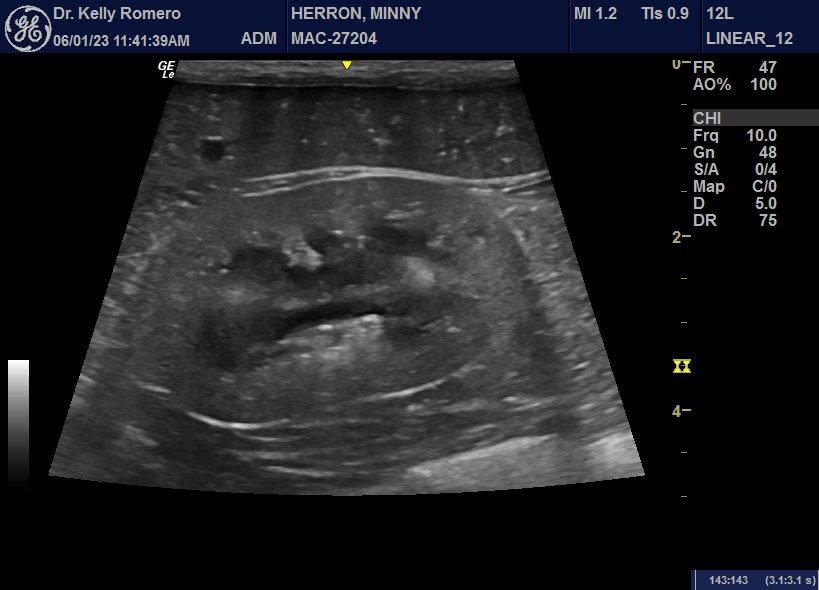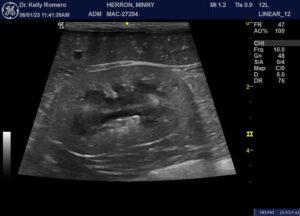12 year old FS Chihuahua with hx of hyperadrenocorticism, hypertension and proteinuria. Decreased appetite. Meds include benazapril, amlodipine, telmesartan and trilostane. Blood pressure still not controlled. Adrenals bilaterally enlarged and not infiltrating surrounding structures. Planning to recheck ACTH stim and adjust BP meds. Two questions: should we still consider a pheochromocytoma? How would you describe the kidney and spleen image and is this common to see in hyperadrenocorticism? Thank you!



5 responses to “Hyperechoic, punctate opacitites throughout spleen and cortices in Cushinoid canine”
Pheo can live with both pdh and adh scenarios. If hypertension is present and one of the adrenals looks abnormal then run a urine catecholamine. The renal cortex and spleen have multifocal pinpoint mineralizations here likely secondary to cushings …. its the sonogrpaher’s calcinosis cutis.
Thank you for the urine catecholamine tip and the terminology! I did have a video of the liver and one of the adrenals, but doesn’t look like it posted.
One more question I’ve had a hard time finding an answer to – will trilostane and/or mitotane decrease the size of the adrenal glands when well managed?
In my experience this is highly variable in fact i would say trilostane causes hypertrophy even further than prior to tx. Also remember that these glands owing to their own intrinsic pathology and the mitotane especially can become inflamed infarct and remodel so i dont think you can say they will behave consistently one way or another. Adrenals in light of cushings and tx are a box of chocolates… you never know what you will get . Another thing i see is clinicians get a+ LDDST without checking baseline UCCR first or the pupd is caused by something else and they treat cushings with a false + LDDST (15-20% of the time F+) with an elevated SAP only then they head to addisons and the adrenals become flat and small as a result. So in other words its not straightforward and lots of false cushings cases out there with genetic issues driving sap and pupd caused by other things or pupd is actually pollakuria or dysuria… too many people skip the correct steps… SAP up, looks the part, true pupd with usg < 1020 then + UCCR then LDDST + and the sonogram shows a tumor or bilateral enlargement of the adrenals... If that isnt all present keep the trilo-mitotane on the shelf and let him emerge into a true cushings if that ever happens. That being said 10-15% PDH patients can have normal adrenal size but ensure all the other parameters are solid in those cases especially.
Thanks for the great explanation, Eric. Sounds like I should be screening my suspected Cushings patients with UCCR similarly as I do basal cortisols on the suspect Addisons patients.